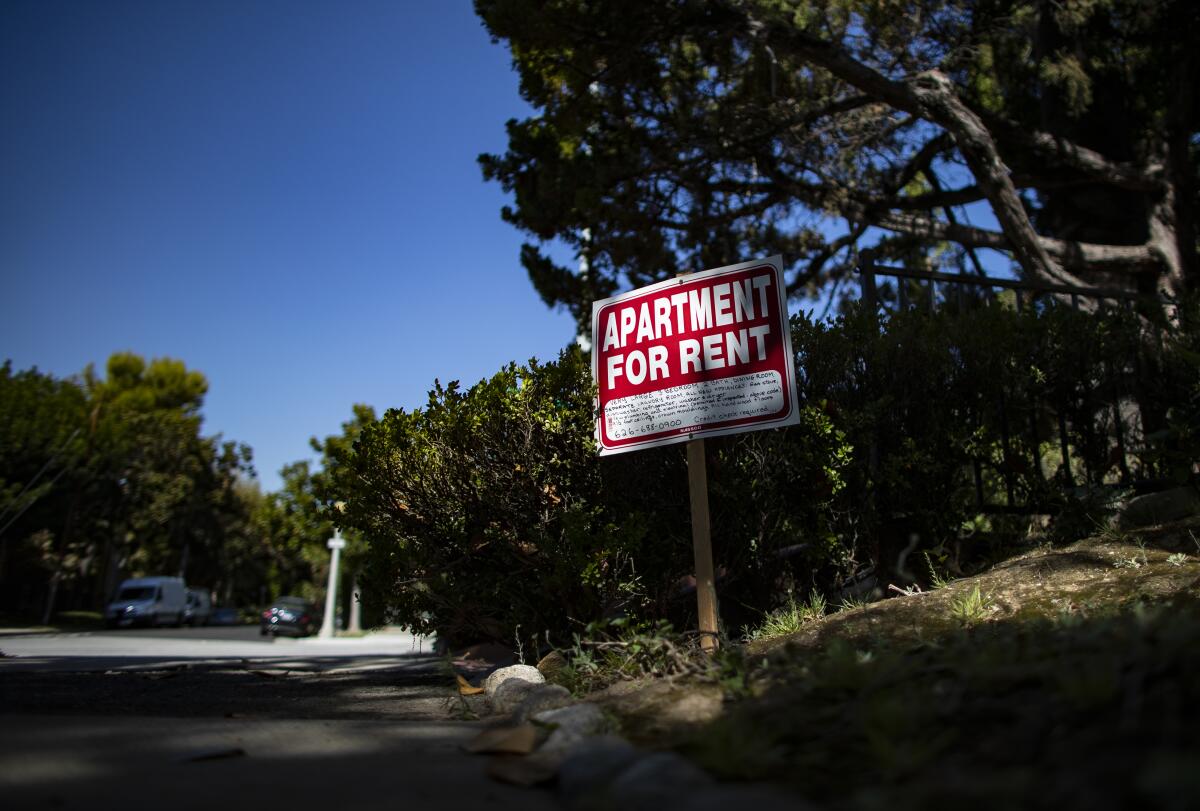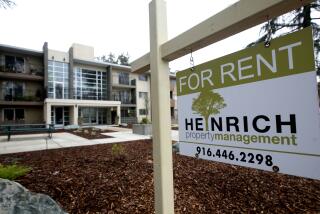Q&A: How will California’s new rent cap affect me?

Millions of Californians will have new safeguards against large rent increases after Gov. Gavin Newsom signed legislation on Tuesday capping annual rent hikes for the next decade.
Newsom has hailed the law, Assembly Bill 1482, as the nation’s strongest statewide renter protection measure. Here’s how it works:
What does the law do?
The law limits yearly rent increases at 5% plus inflation for the next 10 years. Had the policy been in place this year, rent increases in the Los Angeles area would be limited to 8.3% while those in San Francisco would have been capped at 9%.
There are a number of exceptions to these rules. The rent cap would not apply to apartments built within the last 15 years or single-family home rentals unless they’re owned by corporations or other institutional investors.
Limits on rent increases will not change for those currently living in rent-controlled apartments. However, the new rules extend protections for renters living in newer complexes in cities with rent control. In Los Angeles, for instance, rent control limits increases to about 3% or 4% per year for those living in apartments built before October 1978. Tenants in buildings constructed between that time and 2005 will now be subject to the statewide rent cap.
The law, which will take effect on Jan. 1, also prohibits landlords from evicting tenants without documented lease violations after a renter has lived in an apartment for a year.
How many people would the law affect?
About 2.4 million California households would be affected by the new rent cap in addition to those living in single-family home rentals that meet the law’s requirements, according to an estimate by UC Berkeley’s Terner Center for Housing Innovation.
An analysis of rental listing data by real estate website Zillow found about 6.7% of the properties statewide in the company’s database last year were subject to rent increases that exceeded the cap.
While the new law allows for rent increases that are much higher than average wage growth, renter advocates argue it will prevent sudden surges at levels that could drive people from their homes.
What negative consequences could result from the law?
Landlords and economists have warned that the law might prompt property owners to increase rents up to the cap out of fears that such hikes would be limited in the future. Research on rent controls has shown that such policies can spur property owners to convert apartment complexes into condominiums.
Currently, landlords are allowed to raise rent by more than the cap. However, starting Jan. 1, they would have to reduce rent to its rate on March 15 of this year, plus the allowable increase.
While that rollback provision is in place for rent increases, a similar one doesn’t exist for “just cause” eviction protections. Tenant groups are concerned that landlords will exploit that gap to get rid of residents who pay below-market rent before the law takes effect in January.
Like other landlord-tenant laws in the state, it will be up to tenants to enforce the rent cap and anti-eviction rules in the court system.
How do California’s new rules compare to renter laws and proposals in other states?
The law makes California the third state to have passed a significant expansion of renter protections this year. Oregon approved a statewide annual rent cap of 7% plus inflation, but unlike California, its law won’t expire in 10 years. New York legislators boosted existing rent controls in New York City and allowed other communities in the state to implement the policy.
California’s rent cap isn’t slowing plans for a ballot initiative that would pave the way for stricter controls on rents across the state. The Los Angeles-based AIDS Healthcare Foundation is collecting signatures for a measure to appear on the November 2020 statewide ballot that would, among other changes, limit how much a landlord could increase rents when a new tenant moves in — something now prohibited under state law.
Times staff writer Andrew Khouri contributed to this report.
More to Read
Start your day right
Sign up for Essential California for news, features and recommendations from the L.A. Times and beyond in your inbox six days a week.
You may occasionally receive promotional content from the Los Angeles Times.







